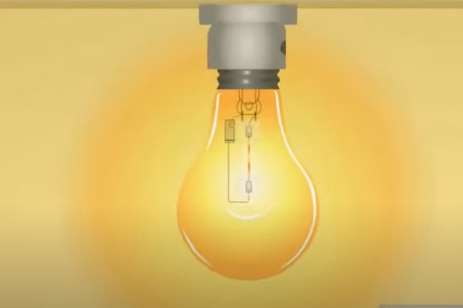In this article, you can learn about how do halogen bulbs work. Halogen bulb together with its incandescent cousin. It’s the largest volume of bulbs sold today in North America. Although incandescent and halogen bulb lamps are giving way to newer and more efficient sources such as LEDs, they still represent an important light source and something worth learning about halogen lamps. Bulbs are named for the gas that fills the inside of the bulb.

How Do Halogen Bulbs Work? What is halogen lighting?
This is an example of the cap inside the lamp bulb itself. How Do Halogen Bulbs Work? Halogen lamps and bulbs are slightly brighter and whiter than their incandescent cousins. Still, they essentially work the same way by heating a filament until it glows, or incandescent halogen bulb lamps enjoy many benefits.
Most notably, the warm, familiar color that flatters complexions and skin tones. Another benefit is the ease and simplicity of screwing in all these different bulb lamps into the same socket. Very flexible in that respect also allows us to put them into simple light fixtures such as this track light or this recessed down light, and equally important, halogen and incandescent light sources can be easily dimmed.
Making them flexible as well as adjustable in terms of light output and color tone. On the other hand, halogen bulbs have several drawbacks, the most significant of which is their inefficiency.
They use much more energy than more efficient light sources such as LEDs or fluorescent, and as a result, they are being replaced in many commercial and institutional applications where they were once used. Halogen bulbs also give off a lot of heat, making them uncomfortable, especially in confined locations, and they don’t last very long. Watch and see halogen bulbs on YouTube!
Just a fraction of the life of an LED lamp. This makes them inconvenient and expensive to maintain, given their advantages and their drawbacks. Halogen bulbs find their primary applications in homes.
We’re familiar with them in hospitality spaces such as restaurants, where their dimmability and flexibility allow them to set different moods and atmospheres, so important for that application. Here are some of the most important types of halogen bulbs you’re likely to see.
How about the simple ordinary bulb? How Do Halogen Bulbs Work?

That fits into table lamps, bulbs, and so many different light fixtures. Once upon a time, they were incandescent. Today, for display lighting, we have par bulb lamps, or for a smaller, more flexible light source, an MR16. The capsule itself can be used alone in landscape lighting, and we have a variety of decorative and display lighting types as well.
How Do Halogen Bulbs Work?
New energy-saving halogen light bulbs provide bright white light and use about thirty percent less electricity than traditional incandescent bulbs. Halogens may last twice as long as a standard incandescent bulb—about three thousand hours—and deliver the same level of brightness while using significantly less energy. Energy-efficient hydrogen filaments are encased in a smaller quartz bulb filled with halogen gas. When the halogen filament is heated by electricity, evaporated tungsten from the filament combines with halogen gas.
Inside the bulb to produce light, this is then recycled and resettled to the filament, which allows it to last longer and burn brighter. The halogen’s energy-efficient lighting is exceptional for numerous areas of your home that need brighter white light.
How do halogen lights work?
When you hear the word halogen, we think about this lamp, but originally halogens are chemical elements in group 17 in the periodic table like fluorine, chlorine, bromine, iodine, etc. So why this name? Let’s see, we know about light bulbs or incandescent bulbs. The problem with this bulb is when the tungsten filament glows. Because of the high temperature, it starts evaporating slowly and deposits on the inner wall of the glass. This blackness causes the bulb to grow increasingly weak until it eventually breaks or fuses.
The problem can be solved by a small amount of halogens such as iodine or bromine. In working, the filament will vaporize and will combine with bromine or iodine, which is present inside the bulb, but at high temperatures, they evaporate tungsten, which will deposit on the filament and thus prevent blackening of the glass or a fuse of the filament. In this way, the vaporization and redeposition of the tungsten take place in a cycle called the halogen cycle; thus, iodine or bromine, which is halogen material, causes the filament to work for a longer period.
And at high temperatures, to withstand the high temperatures, the glass is made of aluminum silicate, and this modified form of incandescent lamp is what we call a halogen lamp, so halogen lamps are a modified and more powerful form of incandescent lamp with a longer life and high temperature with halogen material in it, so this was about halogen lamps.
How do halogen lamps work?
study about halogen incandescent lamps. In a halogen incandescent lamp, the temperature of the filament is increased to 3000 Kelvin. The filament material, or tungsten, that gets evaporated chemically reacts with the halogen in such a manner that an important part of the evaporated filament material returns to the filament. This process is called the halogen cycle. Thanks to this process, the lifetime of the halogen lamp is longer than that of a normal incandescent lamp, up to 2000 to 4000 hours.